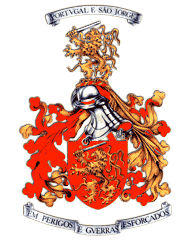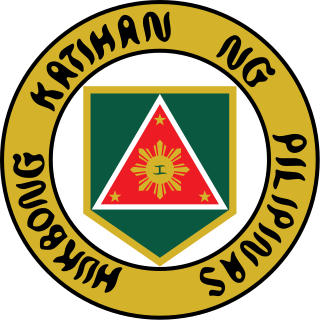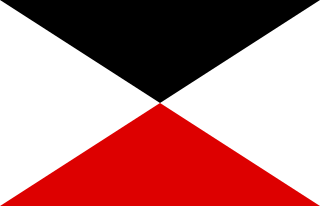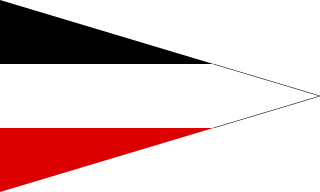Divisional
As the IJA was an infantry force the most common type of division was the infantry division. Later four tank and one parachute division were formed. The first 18 infantry divisions were originally formed as square divisions, and after 1938, most of the remainder were formed as triangular divisions with the security divisions being binary divisions. During the course of its existence the IJA organized three Guards Divisions and over 220 infantry divisions of various types (A/Reinforced, B/Standard, C/Counter-insurgency). On 7 December the IJA had two divisions serving in Japan/Korea and 50 serving abroad, most in China. During the war another 117 were raised for foreign service and 56 were raised for national defense. These totaled 223 including the Imperial Guard. Of this total no more than 35, that is one fifth of the IJA infantry division total, fought in the Pacific theatre.
Organisation
The Standard, or Type "B" division was organised as:
- Headquarters (300)
- Infantry brigade (11600) [1]
- Headquarters
- Three infantry regiments, each of:
- Field artillery regiment (2300)
- Headquarters and escort
- Three field artillery battalions, each of:
- Headquarters and transport
- Three field artillery companies, each with 4 x 75mm field guns (Type 38, Type 90 or Type 95)
- Cavalry regiment (battalion) (950)
- Headquarters and escort
- Three mounted companies
- Machine gun company, with 6 x heavy machine guns
- Engineer regiment (battalion) (900)
- Four engineer companies
- Materials company
- Transport regiment (1800)
- Up to six companies, with either carts, pack horses, or motor transport
- Divisional signals (250)
- Medical Unit (900)
- Up to four Field Hospitals, each of 250 personnel (1000)
- Epidemic Prevention and Water Purification Department (120)
- Ordnance unit (50)
- Veterinary unit (50)
Total personnel (19,770) [2] [3]
It was common for a Mountain Artillery regiment, with a total of 3400 men and 36 x Type 94 75 mm Mountain Guns, to be substituted for the Field Artillery regiment, especially for operations in rough terrain. A Reconnaissance regiment, with a mix of mounted, motorized infantry and anti-tank companies, could replace the Cavalry regiment.
The Reinforced or Type "A" division generally substituted medium artillery companies with 4 x Type 91 10 cm Howitzer or long-range Type 92 10 cm Cannon for one or more field artillery companies in the field artillery regiment. It might also have an attached medium artillery battalion with three companies each of 4 x Type 96 15 cm Howitzer or long-range Type 89 15 cm Cannon, and an attached tank regiment (battalion). Conversely, the Type "C" division would lack artillery and other supporting arms.
Organisation of the 3 Type divisions [4] | subdivision | Type A | Type B | Type C |
|---|
| Infantry Regiment | 3 x 5,687 | 3 x 3,845 | 2 x 4,750 |
| Artillery Regiment Or Mountain Artillery Regiment | 1 x 2,379 1 x 3,400 | 1 x 2,480 1 x 3,400 | |
| Medium artillery regiment | 1 x 951 men | | |
| Reconnaissance regiment Or Cavalry regiment | 1 x 730 1 x 950 | 1 x 730 1 x 950 | |
| Tank unit | 1 x 717 | | |
| Engineer Regiment | 1 x 1,012 | 1 x 900 | 1 x 600 |
| Transportation regiment | 1 x 2,729 | 1 x 2,480 | 1 x 1,800 |
| Tankette unit | | 1 x 100 | |
| Weaponry | 10,000 rifles 405 LMGs 112 HMGs 457 Grenade dischargers 40 37 mm anti-tank guns 36 70 mm battalion guns 24 75 mm regimental guns 24 105 mm guns 12 150 mm howitzers 13 tankettes/armoured cars 48 medium tanks | 9,000 rifles 382 LMGs 112 HMGs 340 Grenade dischargers 22 37 mm anti-tank guns 18 70 mm battalion guns 12 75 mm regimental guns 36 75 mm field/mountain guns 7-17 tankettes/armoured cars | 6,950 rifles 110 LMGs 32 HMGs 112 Grenade dischargers 16 light mortars 8 70mm battalion guns |
| Total (as standard) | 29,408 men 9,906 horses 502 vehicles | 20,000 men 7,500 horses | 13,000 men 2,600 horses |
Brigades and equivalents
The Japanese Imperial Army had two types of Mixed Brigades.
- The divisional Mixed Brigade was the semi-permanent detachment of a brigade from an Infantry Division with various Divisional support units or units attached from its Corps or Army. This provided a combined arms force of infantry, artillery, cavalry and other support units.
- The Independent Mixed Brigade was a detachment composed of various units detached from other units or independent support units formed together in a brigade. The first two Independent Mixed Brigades, formed by the Kwantung Army in the 1930s were the IJA 1st Independent Mixed Brigade and the IJA 11th Independent Mixed Brigade. Each of these brigades were organized in a unique manner and one of them, the 11th, was later formed into the IJA 26th Division. Later a series of Independent Mixed Brigades were formed for the purpose of garrisoning the large territories of China captured in the early phase of the Second Sino-Japanese War. This variety for China was usually organized with five infantry battalions, an artillery unit, and labor troops. In the Pacific theater they had different and more varied configurations of subordinate units. Towards the end of the Burma Campaign, some were hastily formed from line-of-communication troops, and even naval personnel and conscripted Japanese civilian workers.
- The Independent Infantry Brigade; several of these were raised as garrison units, mostly for China.
- The 1st to 4th Amphibious Brigades were formed for use in the Pacific theater. These 5,500 man Sea-Landing Brigades, were used to conduct amphibious assaults on an island but afterwards they stayed to garrison that island.
Regiments
The IJA maintained two types of Independent Regiments, both were used to provide garrisons in occupied areas.
Detachments
Detachments were particular military formations of the Imperial Japanese Army. Similar to German Kampfgruppen, these detachments were usually a force of infantry, artillery, armor, and other support units which were temporarily assigned for independent action and had a special mission. They were usually named after their commanders or the area in which they were to operate, and could be any size below division.
Other units
Kempeitai Auxiliary units
Kempeitai Auxiliary units consists of regional ethnic forces in occupied areas. Troops supplemented the Kempeitai and were considered part of the organization but were forbidden by law to rise above the rank of Shocho (Sergeant Major). According to United States Army's TM-E 30-480 Handbook On Japanese Military Forces, there were over 36,000 regular members of the Kempeitai at the end of the war; this did not include the many ethnic "auxiliaries". As many foreign territories fell under the Japanese military occupation during the 1930s and the early 1940s, the Kempeitai recruited a large number of locals in those territories. Taiwanese and Koreans were used extensively as auxiliaries to police the newly occupied territories in Southeast Asia, although the Kempeitai recruited French Indochinese (especially, from among the Cao Dai religious sect), Malaysians and others. The Kempeitai may have trained Trinh Minh The, a Vietnamese nationalist and military leader. Some sources report that the Kempeitai recruited criminals as law enforcers.
Recruitment
Conscription
Conscription of all able-bodied males aged 17 (in practice from the age of 20) to 40 was instituted in 1873 and revised in 1927. Once called up, candidates were given a medical examination and classified as one of the following:
- Class I-A: "fit for active service"
- Class II:
- B-1: "fit for active service with minor reservations"
- B-2: "fit for active service with reservations"
- Class III-C: "unfit for active service, but fit for national service"
- Class IV-D: "physically unfit; exempted from all service" (after two successive examinations) or automatically exempted from all service
- Class V-E: "fitness undetermined; examination postponed to later date"
Upon receiving their classifications, peace-time Class I-A recruits were enlisted by lottery into either the jobi hei-eki (Regular Army and Imperial Navy) category, consisting of the gen-eki (active service) and the yobi-eki (primary reserve service) sub-categories, or into the kobi hei-eki (secondary reserve service) category. Those in the "gen-eki" sub-category would serve for two years in the army or three in the navy. After this period, they would be placed on the primary reserve service list (yobi-eki) for five years and four months in the army or four years in the navy, and would be subsequently placed on the secondary reserve service list after 10 years in the army (five in the navy) before being placed on the national service list (kokumin hei-eki) after 17 years and four months of army service (or 12 years of naval service). A similar but less stringent path was set out for those enlisted into the primary or secondary reserve categories; they would also end their service on the national service list. The least rigorous path was for those enlisted into the hoju hei-eki (replenishment territorial army and naval volunteer reserve), who would end their service on the national service list.
In peace-time, Class II recruits were not recruited, but were assigned to national service. In wartime, Class II B-1 and Class II B-2 recruits were enrolled into the hoju hei-eki category, with II B-1 recruits enlisted into the first supplementary territorial army and naval volunteer reserve and II B-2 recruits enlisted into the second supplementary territorial army and naval volunteer reserve, respectively. II B-1 recruits would serve for two years and four months in the territorial army or one year in the naval volunteer reserve; II B-2 recruits would serve for 12 years and four months in the territorial army or 11 years and four months in the naval volunteer reserve. Upon reaching the age of 40 in peace-time, all soldiers in Classes I and II would be placed on the national service list and released from regular duties.
In practice, total conscription of the available population was only instituted during the Second World War. Before then, only a proportion of the secondary reserve service had been called to active duty, during the Russo-Japanese War. Class III-C recruits were automatically assigned to national service if necessary. Conscripts classified as Class IV-D were reexamined the following year; if they could not be reclassified into any of the first three classes, they were officially exempted from all military service. Sole supporters of families and criminals sentenced to over six years penal servitude were automatically listed as Class IV-D and exempted from all service. Students at certain higher secondary schools were classified as Class V-E until they had finished their studies or upon reaching the age of 27, whichever came first. Japanese students studying abroad were also classed as Class V-E until reaching the age of 37.
From December 1927, conscripts who had completed a course of study with the requisite marks at a government-run Young Men's Training Institute ("Seinen Kunrenshou"), the curriculum of which included 200 hours of military training, could have their period of active service reduced to 18 months. Normal-school graduates with the requisite marks had their active service reduced to five months. Graduates of middle and higher schools who had completed courses in military training with the requisite marks were required to serve one year for middle-school graduates or for 10 months for higher-school graduates. [6] [7]
Salaries, benefits and pensions
Salaries and pensions for Imperial soldiers and sailors were very low by Western standards. On the eve of the Second World War, the yen had a value of $0.23. [8] No true exchange rate existed for the yen during the war years, and wartime inflation reduced the yen to a fraction of its pre-war value. [9]
Officer cadets were paid a yearly salary of ¥670 ($154.10 in 1941 dollars). Second lieutenants were paid ¥850 yearly ($195.50), lieutenants ¥1020–1130 ($234.60–259.90) and captains ¥1470–1900 ($338.10-437). Majors were paid ¥2330 yearly ($535.90), lieutenant-colonels ¥3220 ($740.60) and colonels ¥4150 ($954.60). Major-generals were paid ¥5000 yearly ($1150), lieutenant-generals ¥5800 ($1334) and full generals ¥6600 ($1518). [10]
A division is a large military unit or formation, usually consisting of between 10,000 and 25,000 soldiers. In most armies, a division is composed of several regiments or brigades; in turn, several divisions typically make up a corps.

A regiment is a military unit. Its role and size varies markedly, depending on the country, service, or specialisation.

The New Army, more fully called the Newly Created Army, was the modernised army corps formed under the Qing dynasty in December 1895, following its defeat in the First Sino-Japanese War. It was envisioned as a regular and professional fully trained and equipped according to Western standards with a reserve. In 1903 an imperial edict expanded it to 36 divisions of 12,500 men each, or total of 450,000 in peacetime supplemented by a further 523,000 reservists in wartime though it never achieved a strength above 300,000.

The Land Component, historically and commonly still referred to as the Belgian Army, is the land branch of the Belgian Armed Forces. The King of the Belgians is the commander in chief. The current chief of staff of the Land Component is Major-General Jean-Pol Baugnée.

The Portuguese Army is the land component of the Armed Forces of Portugal and is also its largest branch. It is charged with the defence of Portugal, in co-operation with other branches of the Armed Forces. With its origins going back to the 12th century, it can be considered one of the oldest active armies in the world.
This article covers the Japanese garrisons on the by-passed Pacific islands from 1944 to 1945, including the Japanese mandated territory of the South Seas Mandate.
The following is the order of battle of the forces involved in the Battle of Shanghai, during the opening stages of the Second Sino-Japanese War.

The Philippine Army (PA) is the main, oldest and largest branch of the Armed Forces of the Philippines (AFP), responsible for ground warfare and as of 2021 had an estimated strength of 143,100 soldiers backed by 131,000 ready reserves. The service branch was established on December 21, 1935, as the Philippine Commonwealth Army. The Philippine Army has engaged in many conflicts including the ongoing Communist rebellion in the Philippines, the Moro conflict and, alongside other national military forces, in conflicts of international scope.

The Guards Corps/GK was a corps level command of the Prussian and then the Imperial German Armies from the 19th century to World War I.

The Manchukuo Imperial Army was the ground force of the military of the Manchukuo, a puppet state established by Imperial Japan in Manchuria, a region of northeastern China. The force was primarily used for fighting against Communist and Nationalist guerrillas in Manchukuo but also took part in battle against the Soviet Red Army on several occasions. It initially consisted of former National Revolutionary Army troops of the "Young Marshal" Zhang Xueliang who were recruited after the Japanese invasion of Manchuria en masse, but eventually expanded to include new volunteers and conscripts. The Imperial Army increased in size from about 111,000 troops in 1933 to an estimated strength of between 170,000 and 220,000 soldiers at its peak in 1945, being composed of Han Chinese, Manchus, Mongols, Koreans, Japanese, and White Russians. Throughout its existence the majority of its troops were considered to be mostly unreliable by their Japanese officers and advisers, due to poor training and low morale.
There were two 11th Independent Mixed Brigades in the Imperial Japanese Army.

The Fourteenth Area Army was a field army of the Imperial Japanese Army (IJA) during World War II. It was originally the 14th Army, formed on November 6, 1941, for the upcoming invasion of the Philippines. It was reorganized in the Philippines on July 28, 1944, when Allied landings were considered imminent. The Fourteenth Area Army was formed by reinforcing and renaming the Fourteenth Army.
The Japanese 21st Army was an army of the Imperial Japanese Army during the Second Sino-Japanese War.
The Japanese 29th Army was an army of the Imperial Japanese Army occupying Malaya during the final days of World War II.
The 109th Division was an infantry division of the Imperial Japanese Army. Its call sign was the Courage Division. It was formed on 24 August 1937 in Kanazawa as a square division, simultaneously with the 108th division. The nucleus for the formation was the 9th division headquarters. It was subordinated from the beginning to the Japanese Northern China Area Army.

The 4th Cavalry Division was a unit of the German Army in World War I. The division was formed on the mobilization of the German Army in August 1914. The division was disbanded in 1919 during the demobilization of the German Army after World War I.

The VI Army Corps / VI AK was a corps level command of the Prussian and then the Imperial German Armies from the 19th Century to World War I.
The Second Sino-Japanese War was fought between 1937 and 1945, involving the military forces of the China and Japan.
The IJA Amphibious Brigades were marines brigades of the Imperial Japanese Army during World War II. They were established in 1943. Although the Japanese invasion of Southeast Asia had been completed at the time of their founding, the Imperial General Headquarters saw the need for flexible countermeasures to defend strategic islands in the Pacific Ocean from impending Allied invasion as the war situation deteriorated for the Japanese Empire.
The French Imperial Army was the land force branch of the French imperial military during the Napoleonic era.









